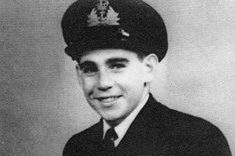History
The Supermarine Walrus was designed to serve as a fleet spotter for catapult launching from cruisers or battleships. Both HMS Leander and Achilles were initially fitted with them.
HMS Leander was commissioned into service with the NZ Division of the Royal Navy and arrived in New Zealand in 1937. Once in New Zealand she undertook a tour of the nation’s ports. On 24 November 1937 at Wellington, her Supermarine Walrus aircraft K8541 overturned in Wellington Harbour on landing. The pilot had forgotten to raise the wheels. The crew survived but the aircraft was written off.[1]
Leander’s aircraft was replaced by K8558 which remained in service until mid 1942 when the aircraft was landed and not used again. Achilles had already landed her aircraft in 1939 before the war broke out. Achilles’ aircraft was reassigned to FAA 720 Catapult Squadron until 21 January 1940, and after that to 700 Squadron until 1944.[2]
Colour Scheme and Markings
In 1937, the aircraft was painted silver with the RAF roundel on the fuselage, under the lower wings and on top of the upper wings. The plane’s number was also painted in black and placed next to the roundel on the fuselage.
When K8558 was initially in service she was painted silver with the roundels. On her nose she also carried the ship’s badge of Leander. Underneath the cockpit was the code Z3. In 1939, the plane was given the code P9A to show she was part of 720 Squadron. In her later service with 700 Squadron, the code markings were removed, and Flight Air Arm (FAA) standard camouflage scheme of dark sea grey, dark slate grey and sky grey lower surfaces was applied. The aircraft’s number was painted in white; no code numbers were applied.[3]
Technical Specifications:[4]
Role: Spotter-reconnaissance amphibian for carrier-borne or catapult duties
Crew: 3
Construction: Metal hull, fabric covered composite metal and wood wings
Engine: One 775hp Bristol Pegasus II M2 or VI
Dimensions: Span 45’10”, 17’11” folded
Length 37’3”
Height 15’3”
Wing area 610 sq. ft.
Weight: 4900lb empty, 8050 fully loaded
Performance: Maximum speed 135mph at 4750ft
Cruising 90mph art 3500
Climb 5.5 minutes to 15,000ft
Ceiling 17,100ft
Range: 444nm
Armament:
1 x Vickers K machinegun in bows and 1 or 2 machineguns amidships
Six 100lb or 2 x 250lb bombs or 2 Mk. VIII depth charges
Bibliography:
Darby, Charles, RNZAF: The First Decade 1937-1946, Melbourne: Kookaburra Technical Publications, 1978, pp. 18-19.
Thetford, Owen, British Naval Aircraft 1912-58, London: Putnam, 1958, pp. 291-295.
[1] Charles Darby, RNZAF: The First Decade 1937-1946, Melbourne: Kookaburra Technical Publications, 1978, p. 18.
[2] Ibid, pp.18-19.
[3] Charles Darby, RNZAF: The First Decade 1937-1946, Melbourne: Kookaburra Technical Publications, 1978, pp. 18-19.
[4] Owen Thetford, British Naval Aircraft 1912-58, London: Putnam, 1958, pp. 293-294.




















![Amokura Training Ship Amokura [formerly HMS Sparrow]](https://navymuseum.co.nz/wp-content/uploads/amokura.jpg)
